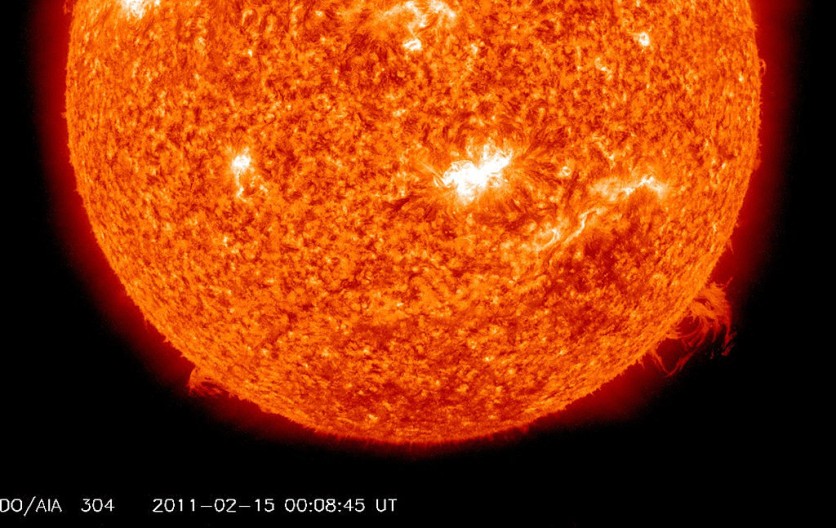The sun emitted at least eight waves of solar flares, according to physicists observing the sun on Wednesday, Dec. 14. More flares are expected to be seen after a notable sunspot is discovered on the solar surface, according to sources.

Sun Released M6 Flares
Spaceweather.com reports that one of the solar flares recorded, categorized as a powerful M6, caused a brief radio blackout over the Atlantic Ocean on Wednesday at 9:42 a.m. EST (1442 GMT).
Large explosions from the sun's surface, known as solar flares, produce powerful electromagnetic radiation bursts. What category a flare falls under depends on how violent the explosion is. A-class flares are the smallest, while M-, C-, B-, and X are the most powerful. The bursts recorded on Wednesday are classified as an M6.
These electromagnetic radiation bursts travel at the speed of light. Those aimed at Earth arrive within eight minutes of leaving the sun's atmosphere.
Read Also : NASA's James Webb Space Telescope Discovers Rare Red Spiral Galaxies from the Early Universe
Physicists Spot Violent Sun Flares
As reported by Space.com, Wednesday's solar flare-up astounded solar physicists, several of whom tweeted about the massive light display. Experts were talking about various points about why the bursts were not typical.
"THREE MORE M FLARES: An M6, M3, and M2 all from AR3165," tweeted solar physicist Keith Strong around 12:30 p.m. EST (1730 GMT) (1730 GMT). "That makes 8 M flares so far today. They seem to be getting bigger, is an X flare in the offing? Stay tuned."
AR3165, as Strong mentioned, is an active region, or sunspot, that has recently appeared on the sun's visible disk. Sunspots are darker, cooler areas in the sun's lower atmosphere where the magnetic field lines are contorted and strained. When magnetic lines burst, releasing energy, flares flash from these regions.
The same Space.com report tells us that solar flares are occasionally preceded by coronal mass ejections (CMEs), which are clouds of magnetized plasma that travel much slower than flares, taking up to three days to reach Earth.
The Space Weather Prediction Center defines CMEs as large expulsions of plasma and magnetic field from the Sun's corona. They can eject billions of tons of coronal material while also carrying an embedded magnetic field more potent than the background solar wind interplanetary magnetic field (IMF).
Furthermore, more explosive CMEs typically occur when highly twisted magnetic field structures in the Sun's lower corona become overly stressed and realign into a less tense configuration.
This can result in the abrupt release of electromagnetic energy in the form of a solar flare, which usually occurs in conjunction with the explosive acceleration of plasma away from the Sun.
These CMEs typically originate from areas of the Sun with localized fields of strong and stressed magnetic flux.
The Sun already produces solar flares regularly, a behavior of the star that no one or anything in space can control. Nonetheless, the solar flares that strike the Earth will significantly impact human life, particularly with rotating blackouts and internet disruptions that they can do nothing but anticipate.
To be more updated with space weather and solar flares visit Spaceweather.com here.





